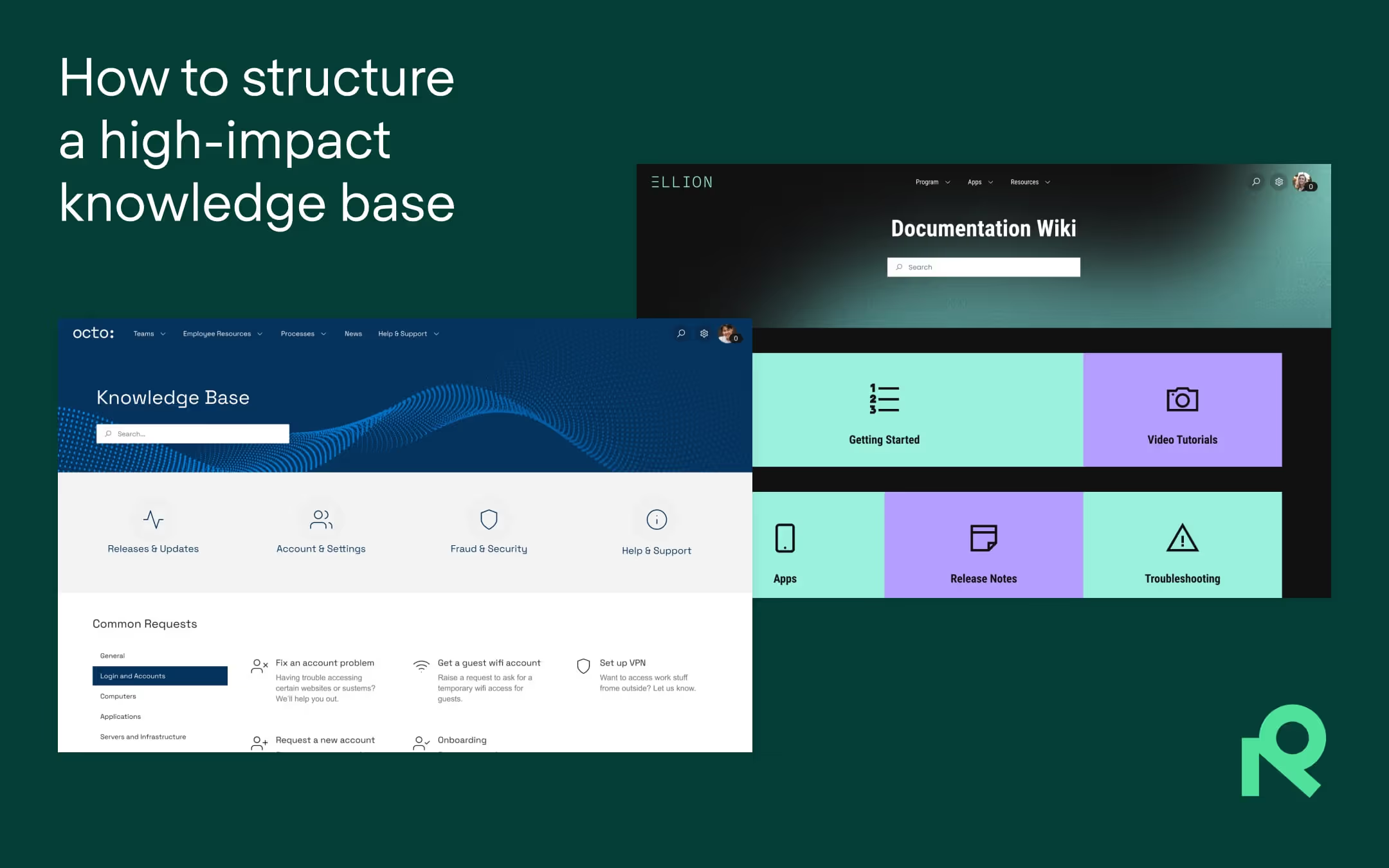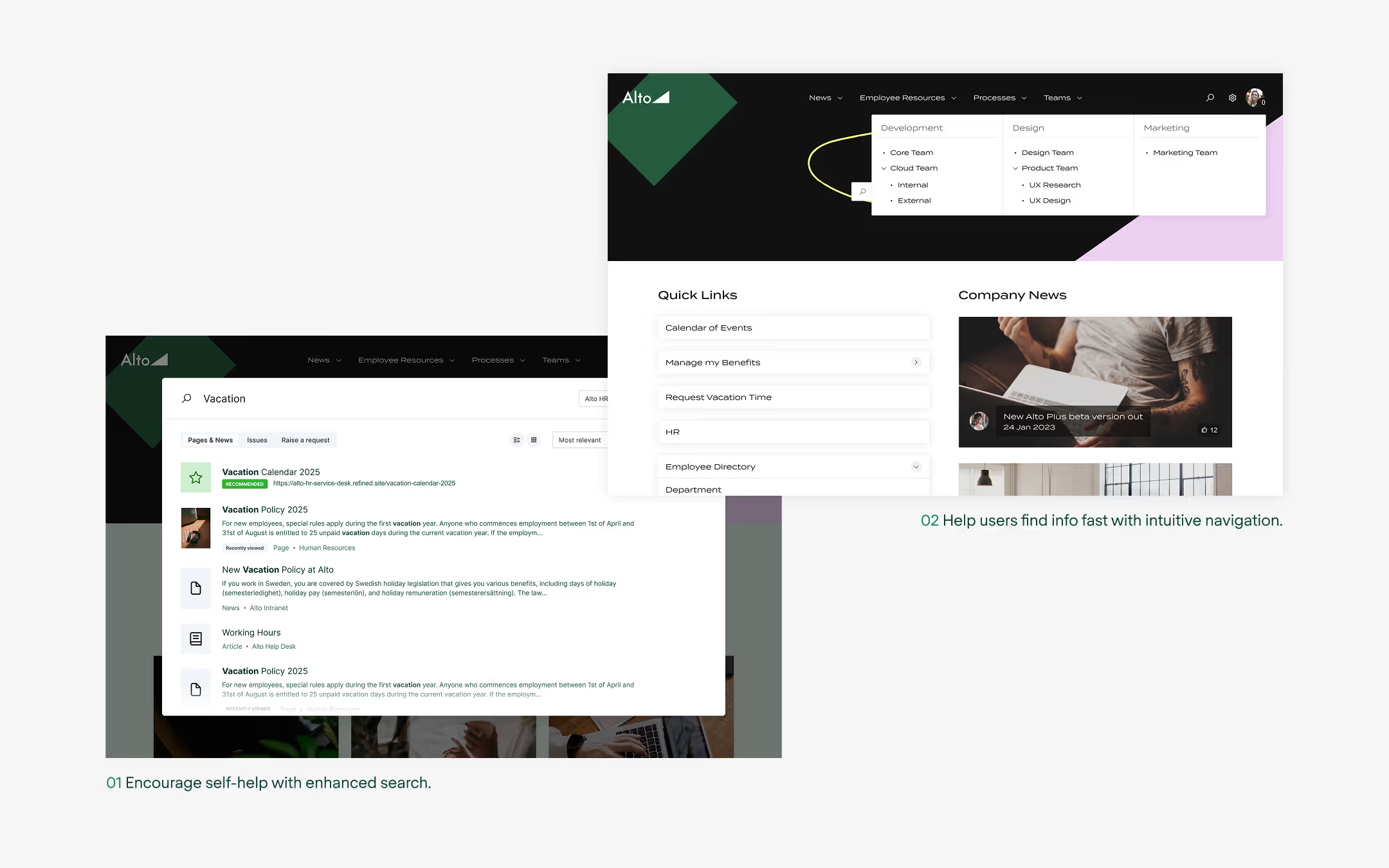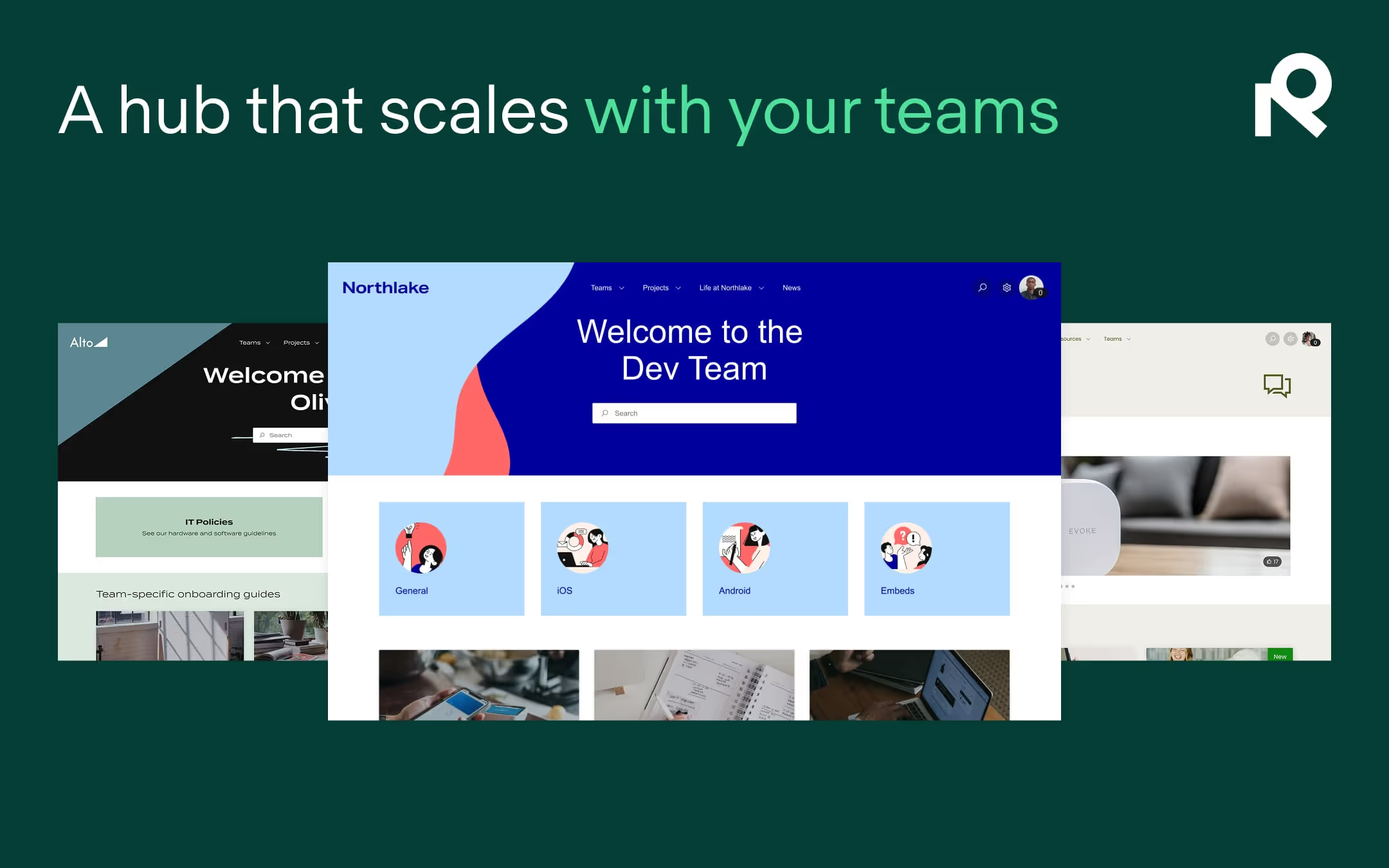Creating a Confluence knowledge base that empowers teams

If your Confluence knowledge base is cluttered, hard to navigate, or slowing down your team, this blog post can help you turn it into a streamlined self-service hub that supports productivity.
It’s easy to see why teams turn to Confluence when they need a knowledge base. It’s flexible, widely adopted, and fits neatly into the Atlassian ecosystem. But flexibility doesn’t always translate into usability.
We’ve seen it happen: well-meaning teams set up a space, start documenting, and before long, the structure starts to fray. Pages multiply. Formatting veers off course. Information gets buried. Instead of streamlining work, the knowledge base becomes one more place where clarity goes to die.
The result? Teams spend more time searching for answers than sharing them. Onboarding slows down, and collaboration grinds to a halt. The support queue fills with questions that should have been self-service.
So how do you build a knowledge base that actually works? That’s what we’re covering here. From common pitfalls to best practices, we’ll walk through what it takes to create a Confluence knowledge base that empowers, not overwhelms.
Why an effective knowledge base matters
When structured effectively, a knowledge base shifts from passive storage to an active tool for communication, decision-making, and team support.
Here’s why a well-designed knowledge base delivers impact:
1. It boosts team efficiency
When content is organized intuitively and consistently, teams spend less time searching for answers and more time executing. This is critical because studies have shown that employees can waste up to two hours a day looking for documents or information they need to do their jobs. Simply put, clarity drives velocity.
2. It enables self-service
Whether for internal teams, external customers, partners, or otherwise, the ability to find answers independently reduces the load on support staff and subject-matter experts. For example, Malmö, Sweden-based app-marker 55 Degrees struggled with low engagement on its public documentation due to poor usability. After upgrading to a clearer, more navigable knowledge base, support requests dropped considerably. Even as their team and customer base grew, their knowledge base was so effective it allowed them to keep the support team lean.

3. It accelerates onboarding for new hires
A well-structured knowledge base helps new hires, who are likely full of questions, get up to speed faster. This is especially critical in the age of remote and hybrid work arrangements, as folks may not have colleagues in close proximity to turn to for quick answers. And the stakes are high – 64% of new hires leave early due to poor onboarding experiences.
4. It centralizes knowledge sharing
When documentation lives in a dozen Slack threads, siloed folders, or individual desktops, information will inevitably fall through the cracks. A well-maintained knowledge base consolidates critical resources into a single, trusted source. That means fewer duplicate pages, less back-and-forth, and greater transparency across teams.

Common challenges with Confluence knowledge bases
From the previous section, we already know that a thoughtful knowledge base is a force multiplier. But unfortunately, many teams struggle to get there.
Why?
For all the powerful capabilities that out-of-the-box Confluence has, the following challenges can still stand in the way:
1. Information sprawl
With no enforced information hierarchy, knowledge gets scattered across multiple spaces and pages. Teams often duplicate information, misplace key articles, or fail to consolidate updates. This, in turn, can lead to version confusion and knowledge siloes.
2. Navigation and search
Native search in Confluence can return broad results. Without custom navigation to guide users toward frequently accessed resources, or promoted search results tied to common queries, users may be left to click through multiple articles hoping to land on the right one.
3. Inconsistent article formatting
Knowledge base articles often lack a shared structure. Some are longform, others bulleted. Some have introductions and FAQs, others don’t. Inconsistent formatting leads to inconsistent comprehension that can undermine trust in the content.
4. Outdated or redundant content
When there’s no review cadence or archiving process, stale content lingers and clutters up search results. Users end up reading outdated material, which can cause operational errors or compliance issues.
Transform Confluence with Refined Sites
How to structure a high-impact knowledge base
Creating a successful knowledge base in Confluence is equal parts content creation and design. Here are a few best practices to guide your approach:
For a deeper dive, check out this blog post on 5 ways to structure and organize a knowledge base.
1. Establish clear menu items and subcategories
Group spaces into a drop-down menu according to use case, audience, or function, and not just by team.
- For example, you might create top-level categories like “HR Policies,” “IT Support,” and “Onboarding Resources,” with relevant spaces and documentation beneath each for specific workflows or with targeted FAQs.
- Use consistent, intuitive naming so users don’t have to guess what lives where.
- Leverage Menu Folders in Refined Sites to create parent menu items that act as a container for spaces and other content (like outbound links or links to specific pages) nested underneath.

2. Standardize landing pages with templates
Templates promote consistency in branding and structure, as well as speed – it’s easier and faster for users to navigate a page they’re already familiar with. Templates also raise the quality bar across the board.
- Think of templates not as constraints, but as accelerators. They save time, prevent rework, and reduce ambiguity.
- Refined Sites helps enforce these standards with pre-made, reusable templates with structured layouts and page hierarchies. Here are some good examples.
A good template makes your pages look beautiful with minimal effort – and you don’t need to be a designer to apply them.
3. Optimize navigation and search
If users can’t find what they need in a few clicks, they’ll give up – or escalate.
- Use labels, tags, and metadata to help users filter by topic or role in Confluence.
- Refined Sites enhances the search experience with promoted search results and AI search. Both can help ensure your most relevant content always surfaces first.
- Remember that an intuitive user interface can reduce the need for search by anticipating user needs and surfacing frequently accessed content. Landing pages can be tailored for specific teams and roles, reducing the cognitive load on users.

4. Maintain and evolve the knowledge base
Content should change as your organization changes. Don’t let your knowledge base become a graveyard of outdated content.
- Build review cycles into your team’s operating rhythm. You can do it quarterly or biannually depending on your content’s shelf life.
- Track search trends to identify content gaps and guide future updates.
Best practices checklist
Use this list to sanity-check your setup or guide a revamp:
- Create clear menu items and subcategories
- Use templates for a consistent user experience
- Regularly review and update content
- Implement intuitive navigation menus
- Brand your knowledge base for a cohesive, on-brand experience
- Optimize search functionality
- Personalize access based on user roles
Want some examples of what a great knowledge base looks like? This blog post highlights some of our favorites.
Empower teams with a smarter knowledge base
A knowledge base should do more than store content. It should empower teams to move faster, reduce the support burden, and collaborate with clarity.
Refined Sites makes that possible by giving Confluence upgraded structure, navigation, and branding. Whether you’re supporting internal teams, customers, or both, a smarter knowledge base starts with smarter tools.
Ready to learn more?
Explore our guide to optimizing Confluence and JSM with Refined.
Read more about



Try Refined free for 30 days

























